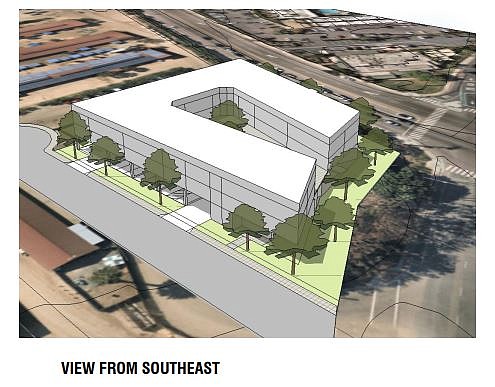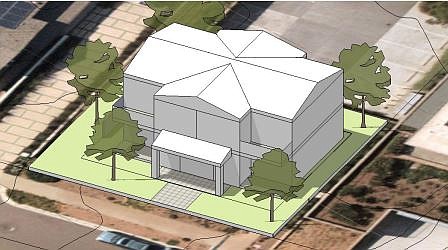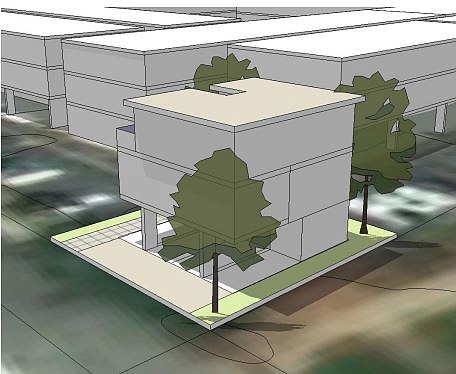 Facebook
Facebook
 X
X
 Instagram
Instagram
 TikTok
TikTok
 Youtube
Youtube

Plans to create 113 low-income homes in Del Mar are finally taking shape. The city needs them to meet its state-mandated fair share of affordable housing, but there isn't much room left to build, and the cost of land is sky-high.
What's more, the state wants the units to be well-integrated, rather than a standalone project for the poor.

One solution being considered is to put at least 61 units - 54 percent of the needed housing - on the state-owned fairgrounds, located on the southeast corner of Via de la Valle and Jimmy Durante Boulevard.
Most of the remaining homes would be built on two vacant city-owned sites at 10th Street and 28th Street.
According to initial studies prepared for the city by Stephen Dalton Architects and Keyser Marston Associates, the most likely scenario would develop at least 1.5 acres at the fairgrounds or a combination of sites: 54 to 80 units at the fairgrounds, along with three units at 28th Street and/or four units at 10th Street.

The options require contributions from the city and county - in addition to free land from the city - ranging from $7.7 million to $13.3 million, which equates to $127,000 to $161,000 per affordable unit.
To address the gaps, they will have to use tax credit programs and federal and state funding sources. The city should expect to contribute at least 20-25 percent of the total project funding, a staff report says.
The state-owned land is free to the developer.
How badly is low-income family housing needed in coastal North County? The report spells it out: the average market rent for a three-bedroom unit is $4,100, while the state’s benchmark for restricted affordable rent of that same unit is $1,604 for a low-income household and $1,336 for very low-income.

Lower income households earn no more than 80 percent of the San Diego County Area Median Income, which in 2022 was a maximum income of $89,800 for a one-person household.
The proposed units, part of the city's Sixth Cycle Housing Element Update, will benefit people who work in the service industry who can't afford to live in Del Mar.
For the housing to go forward on the fairgrounds, the city must secure an agreement with the state fair board by December 2024.
City officials hope to dodge the default plan. Should the deadline be missed, they would be required to up-zone the north bluffs for development of high density affordable housing.
At a meeting yesterday to discuss the studies, city council members said they would like to increase the fairgrounds acreage for affordable housing, which consultant Stephen Dalton said might not work because it could impact other buildings, like the barns.
"Two acres might be a different negotiation with the fairground."
Councilmember Dave Druker said the next step is the consultant, to guide them through the funding options.
"I think we need to go big or not go. Show the state how to build affordable housing on state land. The major thing is how to put as much on the fairground as possible."


Plans to create 113 low-income homes in Del Mar are finally taking shape. The city needs them to meet its state-mandated fair share of affordable housing, but there isn't much room left to build, and the cost of land is sky-high.
What's more, the state wants the units to be well-integrated, rather than a standalone project for the poor.

One solution being considered is to put at least 61 units - 54 percent of the needed housing - on the state-owned fairgrounds, located on the southeast corner of Via de la Valle and Jimmy Durante Boulevard.
Most of the remaining homes would be built on two vacant city-owned sites at 10th Street and 28th Street.
According to initial studies prepared for the city by Stephen Dalton Architects and Keyser Marston Associates, the most likely scenario would develop at least 1.5 acres at the fairgrounds or a combination of sites: 54 to 80 units at the fairgrounds, along with three units at 28th Street and/or four units at 10th Street.

The options require contributions from the city and county - in addition to free land from the city - ranging from $7.7 million to $13.3 million, which equates to $127,000 to $161,000 per affordable unit.
To address the gaps, they will have to use tax credit programs and federal and state funding sources. The city should expect to contribute at least 20-25 percent of the total project funding, a staff report says.
The state-owned land is free to the developer.
How badly is low-income family housing needed in coastal North County? The report spells it out: the average market rent for a three-bedroom unit is $4,100, while the state’s benchmark for restricted affordable rent of that same unit is $1,604 for a low-income household and $1,336 for very low-income.

Lower income households earn no more than 80 percent of the San Diego County Area Median Income, which in 2022 was a maximum income of $89,800 for a one-person household.
The proposed units, part of the city's Sixth Cycle Housing Element Update, will benefit people who work in the service industry who can't afford to live in Del Mar.
For the housing to go forward on the fairgrounds, the city must secure an agreement with the state fair board by December 2024.
City officials hope to dodge the default plan. Should the deadline be missed, they would be required to up-zone the north bluffs for development of high density affordable housing.
At a meeting yesterday to discuss the studies, city council members said they would like to increase the fairgrounds acreage for affordable housing, which consultant Stephen Dalton said might not work because it could impact other buildings, like the barns.
"Two acres might be a different negotiation with the fairground."
Councilmember Dave Druker said the next step is the consultant, to guide them through the funding options.
"I think we need to go big or not go. Show the state how to build affordable housing on state land. The major thing is how to put as much on the fairground as possible."
Comments